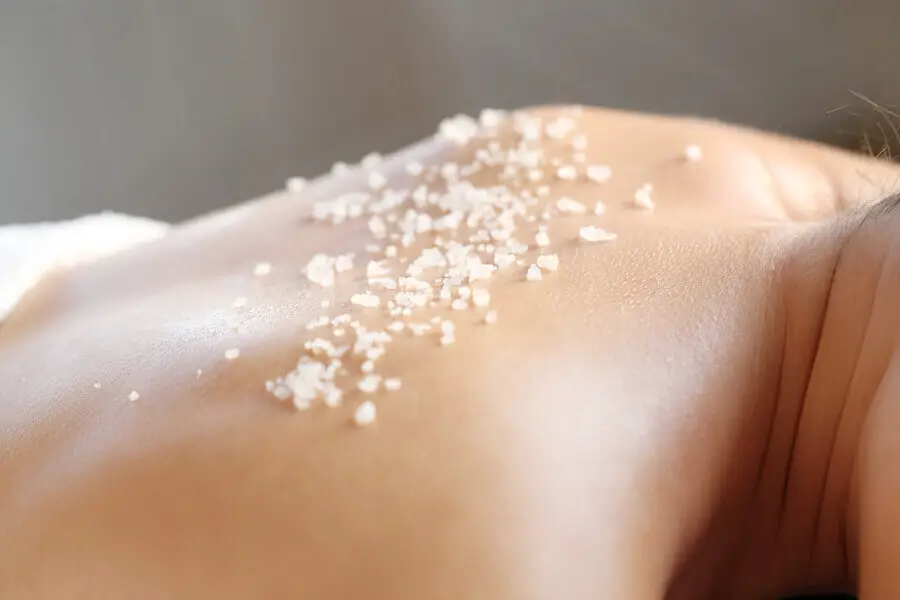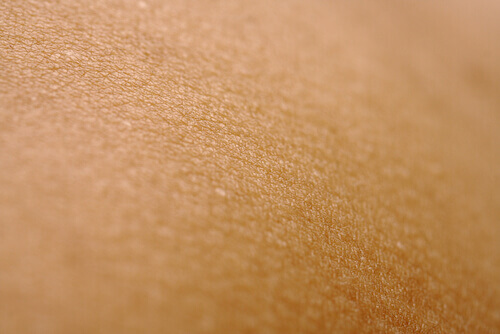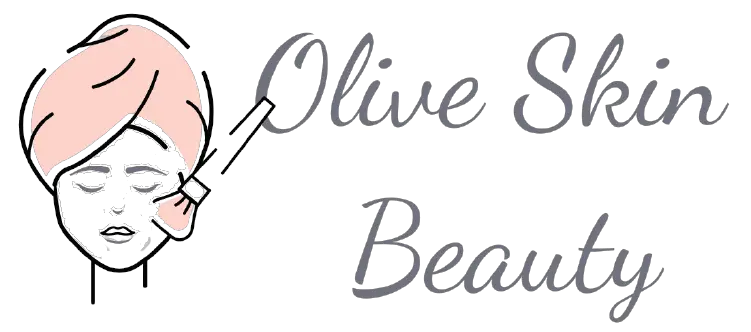The skin on the human body is its largest organ and it can be a reflection of overall health. Sometimes, changes in skin color or texture can be a sign that something is wrong.
If you notice yellow, white, or salt crystals coming out of your skin, it could be a sign that you have a health condition causing salty sweat or dirty skin. previous methamphetamine use can also lead to this problem.
Keep reading to learn more about what these symptoms mean and how to get treatment if needed.
Crystals coming out of skin
If you notice that crystals are coming out of your skin, it could be a sign that you have a health condition causing salty sweat or dirty skin.
The skin on our bodies has a thin layer of oil that keeps it from being too dry or too wet. This oil is called sebum and its job is to keep the skin moisturized and protect it from germs and dirt.

Unfortunately, some conditions can cause sebum to become too thick or not produce enough moisture on the skin’s surface, which can then lead to crystals coming out of the skin.
Let’s take a look at the conditions that can cause this.
Hyperhidrosis
This is described as a condition where you sweat too much for no reason, which could be caused by certain medications, alcohol withdrawal, psychological stress, or other factors
The excess sweat can cause crystals to be released on the skin’s surface, which usually forms yellowish-white crusts.
However, some people who have hyperhidrosis also experience itchy skin, heat rash, and broken-out patches of skin that resemble acne.
What to do
If you notice that crystals are coming out of your skin and you have hyperhidrosis, it means that the condition is causing too much sweat to be released on the surface of your skin.
It is usually recommended that using sweat block wipes (like this) or antiperspirant can temporarily block off sweat glands. At-home treatments could also include taking a hot shower or bath and gently scrubbing off any excess crystals stuck on your skin.
You should also see a doctor for professional treatment options if needed. Your doctor might prescribe stronger antiperspirants or medications that can reduce sweating and mild cases of hyperhidrosis
Dirty Skin
With a condition called eczema, the skin can become inflamed and itchy. This makes people with this condition want to scratch their skin, which can lead to bacteria or fecal matter getting into areas around your nails or under your fingernails.
This will trigger an immune response in the body, which could lead to dirty skin that causes yellowish-white crystals to form on its surface.
If you notice these symptoms after scratching your body, then you might have eczema. This is because scratching can cause small breaks in the skin’s surface that allow dirt particles to be absorbed by the body’s lymph nodes.
What to do
Even if you are unaware of any open wounds at the time, bacteria can still get into your body through these breaks in the skin’s surface
This is why it is recommended to keep your nails short and clean at all times. You should also never scratch or pick at dry spots on your skin because this could lead to infections by dirty particles being absorbed into the body’s system.
Besides keeping your nails trimmed, you can wash your hands with soap and water to prevent any bacteria from entering into open wounds that are not noticeable at first glance.
Methamphetamine Use
Some people who have used methamphetamine might experience jaundice, which causes yellow-tinted skin due to excess carotene levels in the blood.
Methamphetamine raises adrenaline levels in the blood, which triggers an increase in breathing rates. The rapid breathing will then cause the body to release more carbon dioxide into the air and this is what causes jaundice
Along with yellow-tinted skin, people who have used meth might also notice cracks in their mouths. This is because when there’s a lack of oxygen in the blood, mucous membranes or soft tissues in different areas of the body can crack easily.
What to do
If you experience yellowing of your skin and you know that you use meth, it means that your excess adrenaline levels are causing carotene levels in your blood to rise.
Carotene is an antioxidant that can turn into dangerous chemicals when it builds up inside cells and tissues. If untreated, excess carotene poisoning can then cause the skin to darken into a brown or yellow shade.
It is recommended that you seek professional help if you know that you are addicted to meth because quitting the drug immediately can stop your body from experiencing any side effects.
The longer you continue using, the more damage it will do to your organs.
However, even if you have stopped using meth for at least six months or more, your skin will still retain its jaundiced look until all excess carotene levels in the blood are flushed out by proper medication.
Tiny crystals coming out of scalp
If you happen to notice tiny crystals coming out of your scalp, it can be caused by a buildup of natural oils and dead skin cells on your scalp.
As time progresses, this buildup can loosely mix into the sebum oil on your scalp, which causes crystals to form.
This can lead to crystalline flakes forming which are similar to those that form on the scalp when you’re having a dandruff problem.
These flakes can keep coming back if your sebum oil production is excessively high.
What to do
The best way to get rid of these tiny crystals from your scalp is to use a specialized shampoo (like this popular brand). You would then have to apply some sort of oil or conditioner on your hair and gently spread it over your entire scalp.
Once the buildup is coated with moisture, you can use a soft brush to help remove these small white shards from your scalp
However, make sure that all residues are removed from the skin before continuing with any hairstyling process because this could actually push some of the crystals into deeper parts of the skin’s surface where they might get stuck.
Preventing Yellow, White, or Salt Crystals Coming Out of Your Skin
There are a few things that you can do to help prevent crystals from forming on your skin.

- Hydrate
First, make sure that you’re drinking enough water. Dehydration can cause the crystals to form. You can tell by touching your skin if you’re hydrated. If your skin is smooth and supple, you are definitely well hydrated.
- Moisturize daily
You should moisturize your skin every day. This will prevent it from becoming dry and flaky, which can lead to crystals forming.
- Treat your wounds
Make sure that any open wounds are treated as quickly as possible. This is especially important if you know that you won’t be able to see a doctor right away because the wound will heal over and trap these crystals inside your skin.
- Use Oil-Containing Products
You should avoid using products that are oil-free because they might end up drying your skin out too much, which can also cause you to form crystals on the surface.
- Wear Loose Clothing
Also, avoid wearing tight clothing or clothes made of synthetic materials. these materials can trap sweat and moisture close to the skin, which can lead to the formation of crystals.
- Personal Hygeine
Finally, make sure that you’re cleaning your skin regularly and using the appropriate products for your skin type. If your skin is oily, try a foaming cleanser.
Make sure that you’re washing the areas where crystals have formed at least once or twice a day to remove any buildup that might be present.
- Use moisturizing soap
if you have dry skin, use a moisturizing soap; if you have oily skin, use a cleanser that is pH balanced. Try a gentle exfoliation product
You might also want to try using a gentle, natural exfoliator on your skin once or twice a week. This will help remove any buildup that has accumulated and prevent crystals from forming down the line.
- Exercise Regularly
Exercise regularly since it can help improve circulation and prevent crystals from forming.
The more blood flows to your skin, the more nutrients that are delivered there, which helps keep it looking hydrated and healthy rather than dry and flaky.
What to do if Your Skin Feels Gritty
If you’ve ever stopped to feel your skin and noticed it feels gritty, you’re not alone. Many people experience this sensation, which is caused by a buildup of dead skin cells on the surface of the skin.
If your skin feels gritty, it’s likely that you have a build-up of oil and sweat on the surface.
This can make your skin feel rough and look shiny. While it’s not harmful, it can be cosmetically unappealing.
Luckily, there are a few things you can do to get rid of the grittiness and restore your skin’s healthy appearance.
- Use a pH balanced product
First, use a pH-balanced cleanser (like this skin-balancing one). This will help break up the buildup from your skin so that it can be washed away. Using a pH-balanced cleanser is important because otherwise, the alkaline product could increase the amount of grittiness you feel, making it harder to remove.
2. Use a gentle exfoliation product
Using a natural exfoliator (scrubs like this also work) is the next good option for removing this buildup from your skin. This will ensure that all particles are removed and your pores aren’t irritated by any sharp edges on the crystals. It’s also important to use an exfoliator with smooth edges so that you don’t inadvertently create micro-tears or irritate your skin further
Although these white and yellow (and sometimes even brown) deposits might look like something other than sebum buildup, this is actually what sebum looks like when it’s crystallized due to excess moisture in your skin that leads to its trapping within the pores.
While this can happen on any part of your skin, it’s often seen around the nose, forehead, and cheeks since these are the oiliest areas on the face.
Using oil-containing products and moisturizers can also help keep your skin hydrated and prevent this buildup.
It will help remove any excess oil and dirt that might be causing the buildup and prevent more from forming in the future.
3. Moisturize daily
Finally, moisturize your skin every day to hydrate it and keep dryness at bay. If you kept up this routine, you should see noticeable results within about two weeks as long as you aren’t experiencing any major changes in your skincare regimen
If the grittiness doesn’t go away after following these steps for two weeks, then you should definitely speak to your dermatologist. There might be other conditions present such as eczema or psoriasis that need medical treatment.
Final Thoughts
If you notice yellow, white, or salt crystals coming out of your skin, then it is not as bad as it may first seem.
These are just crystallized sebum caused by excess moisture in your skin trapping the oil within the pores.
This buildup can be removed with a pH-balanced cleanser, gentle exfoliation, and daily moisturization to hydrate your skin so that this doesn’t happen again.
Just be sure to speak to your dermatologist if you have any concerns about other underlying conditions present.

